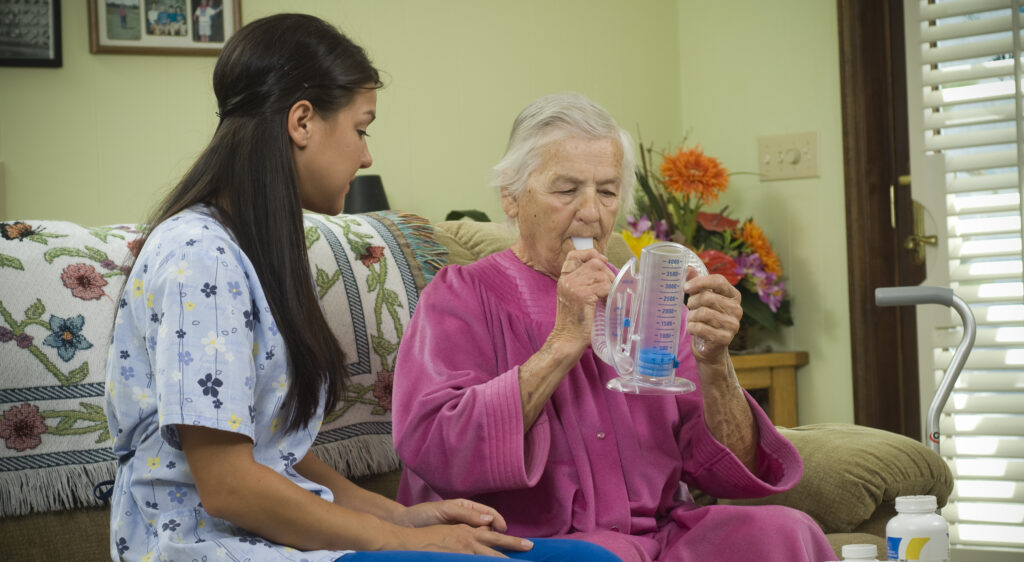Breathing Easier with Pulmonary Rehabilitation

Approximately 25 million people in the United States live with lung conditions like chronic obstructive pulmonary disease (COPD) and pulmonary fibrosis (PF). Both of these diseases thicken the lungs making it difficult to breathe and for the body to get needed oxygen. The good news is that pulmonary rehabilitation, which includes physical therapy, can help people increase lung strength, manage problematic symptoms, and reduce hospital visits.
What is pulmonary rehabilitation and who needs it?
The goal of pulmonary rehabilitation is straightforward: help patients with lung disease live and breathe better. It does so by providing education and exercise in a supervised medical program The most common diseases that benefit from pulmonary rehabilitation are COPD, asthma, pulmonary hypertension, and cystic fibrosis. Other conditions which impact lung performance, like scoliosis, can also be alleviated by this particular rehabilitation. Anyone diagnosed with these conditions can usually participate in a pulmonary rehab program.
Before beginning, medical tests may be required. The results of these tests are used to design the individual’s rehabilitation plan. For example, breathing tests and a six-minute walk measure the functional status of the lungs and can provide a baseline to improve on. Since movement is a core component of the program, an exercise stress test showing oxygen levels, blood pressure, and heart rate during activity can screen for possible adverse effects that may occur.
What happens in pulmonary rehabilitation?
Each pulmonary rehabilitation program is unique. It can take place in a hospital or clinic and usually includes physical therapy or breathing exercises to do at home. Most last several weeks and include small group work with some type of monitoring. Linda Sawchuk, a respiratory therapist and a facilitator of an American Lung Association Better Breathers Club , explained, “It’s a great place to get people physically rehabilitated, and also to [connect with] people with similar problems. There’s a real community in rehab.”
Usually, pulmonary rehabilitation includes five different components.
- Training includes how the lungs work, how to identify and mitigate flare-ups, what to do to make medications more effective, what modifications can conserve energy and breath, and how to quit smoking.
- Techniques such as pursed lip or yoga breathing are taught to encourage breath control and reduce breathlessness during stressful or active situations.
- Mental health. Depression, anxiety, and other emotional challenges are normal reactions to long-term (chronic) illnesses. Individual or group support and stress management tips can help.
- Physical health. Supervised exercise strengthens muscles as well as flexibility and stamina, making everyday living easier. Oxygen therapy may be added to make activity easier.
- To manage symptoms, knowing what foods to eat and in what proportions is important. Sometimes, a weight-loss plan, supplements, or medicines are also recommended by a dietician.
Pulmonary rehabilitation has a few risks, and it doesn’t cure conditions. But it is a proven method for improving wellbeing and comfort for those with lung conditions. When you can breathe easier, it’s easier to focus on the quality of life.
Sources: National Heart, Lung, and Blood Institute; American Lung Association; AHA Journal.
![CPT Rehab [logo]](https://www.cptrehab.com/wp-content/themes/cpt-rehab/images/logo.png)